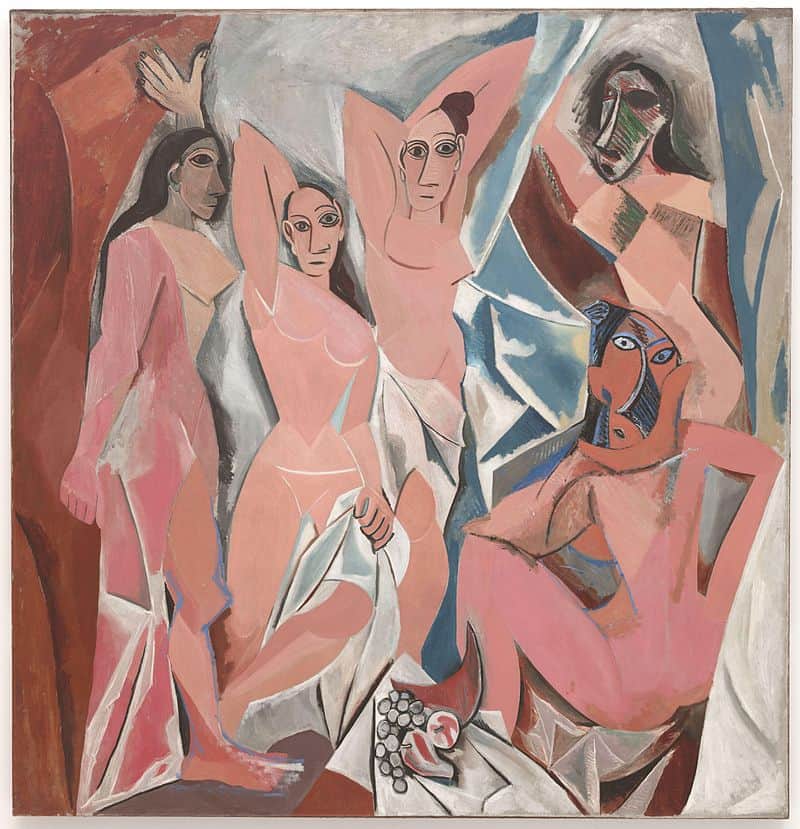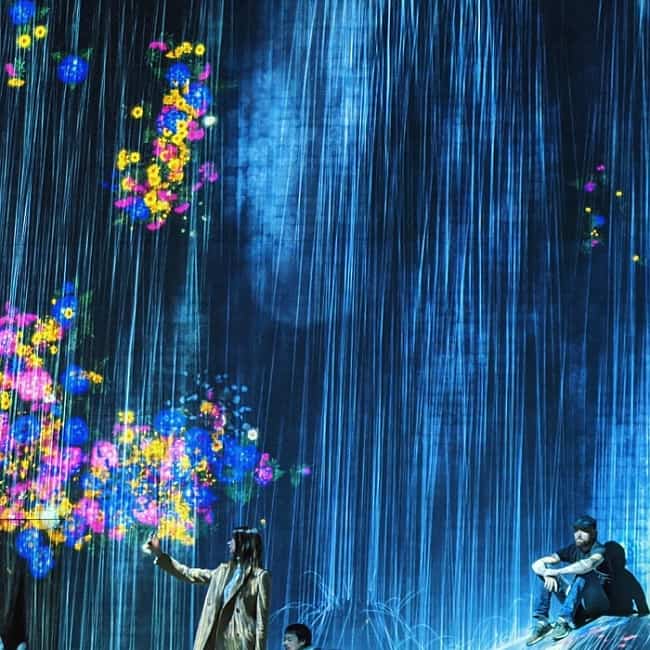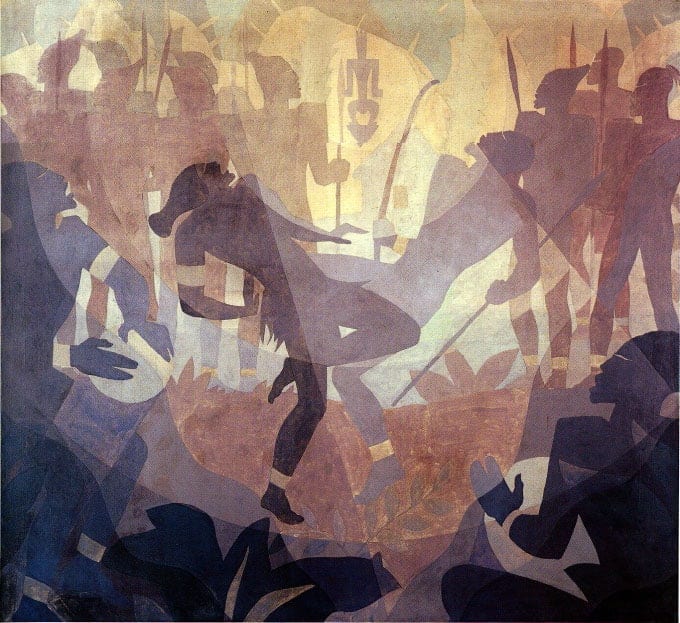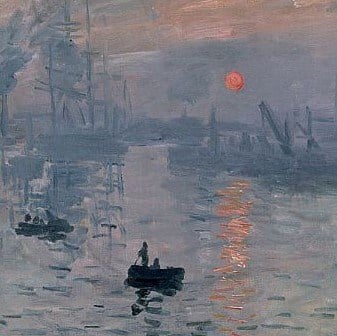- History, where works of genius were created under the auspices of new philosophies and ideals embraced by artists. It becomes restrictive to label art movement, but these collective names are helpful in exploring an itinerary of artistic expression. Taking through some of the most recognizable art movements and styles – from Classicism to Avant-garde – pointing out their peculiarities, here.
Art Nouveau

- Art Nouveau is a decorative style that swept Europe and the United States from about 1890 until 1910. Also known as Jugendstil in Germany and Sezessionstil in Austria, this style is characterized by sinuous, asymmetrical lines rooted in organic forms. It shows up more often than not in intricately designed furniture, jewelry, even metro stations such as the iconic entrances to the Paris Métro. While it provided impetus to painting and sculpture, its most crucial influence was on architecture, graphic arts, and design. Art Nouveau aimed at abandoning the imitative historicism of the 19th century and set into place a bold, innovative aesthetic that still inspires designers today.
Enter the charming world of Art Nouveau and its timeless elegance.…
Cubism

- Invented by Pablo Picasso and Georges Braque in 1907, Cubism changed the face of art representation. This movement changed the conventional outlook by breaking down subjects into geometric planes and fragmented compositions. In this style, artists wished to show objects from various angles simultaneously, creating an energetic and new visual language. Whether it was nudes, landscapes, or still-life studies, Cubism is a radical departure from realism and finds its influence on architecture and design. Indeed, Cubism laid the base for all future modern forms of art, making the style a cornerstone of 20th-century creativity.
Find out how Cubism changed the world of art…
Dada / Dadaism

- Emerging during World War I, Dadaism was an artistic and literary protest against the societal norm and conventional artistic manners. Dada artists aimed to shock audiences into self-awareness, rejecting logic and tradition for absurdity and spontaneity. Iconic works like Marcel Duchamp’s “Fountain”-a signed urinal-underscore the playfulness and defiance of the movement. This anti-establishment creation has remained a testament to the power of art to challenge and provoke, influencing modern and contemporary art with its boundary-pushing spirit.
Delve deeper into the rebellious energy of Dadaism….
Digital Art

- Digital Art is a general practice that involves the use of electronic technologies in the creation and presentation of works. From computer graphics and virtual reality to artificial intelligence and NFTs, this constantly evolving field is reconfiguring the contemporary art market. Notable examples include the rise of immersive experiences pioneered by teamLab’s digital installations and the record-shattering sale of Beeple’s NFT “Everydays: The First 5000 Days” for $69 million. It continues to push the edges of creativity with its techniques, opening endless possibilities that have yet to be utilized by artists and collectors.
Learn more about the limitless world of Digital Art….
Fauvism

- Fauvism is the name coined by critic Louis Vauxcelles and represents an early 20th-century art movement that embodies bold colors and energetic brushstrokes. With the avant-garde Henri Matisse and André Derain at the helm, what appealed to the Fauvist approach in color was not realism but brightness. The landscapes, portraits, and still lifes became brilliant in colors through this audacious use of color and later influenced other styles like Expressionism. The appeal of Fauvism for contemporary lovers of this form lies in the emphasis on raw, untamed beauty.
Discover the bright world of Fauvism and its fearless colors….
Futurism

- Founded by the poet Filippo Tommaso Marinetti in 1909, Futurism glorified the dynamism and energy of the modern mechanical world. This Italian movement combined abstract art and literature in a way that expressed speed, power, and life of the industrial age. Futurist artists like Umberto Boccioni created works evoking motion and energy, such as “Unique Forms of Continuity in Space.” The innovation and technology of the movement’s themes hit particularly close to home in an increasingly digital era.
Explore the movement of Futurism and its modern echoes…
Harlem Renaissance

- By the end of World War I, the Harlem Renaissance was in full bloom in Harlem, New York, largely an African-American neighborhood. It was in the visual arts, works of literature, music, and theater that this new flowering celebrated black life, self-expression, and reject stereotypes. Iconic individuals like Jacob Lawrence, Zora Neale Hurston, and Langston Hughes managed to redefine artistic and cultural narratives for generations that followed. The Harlem Renaissance can today be viewed as a continually unfolding signifier of creative resilience and pride.
Learn more about the Harlem Renaissance and its lasting legacy…
Impressionism

- Impressionism is a 19th-century movement that revolutionized art by focusing on the capture of moments and the dance of light. It is characterized by the use of small, visible brushstrokes to vividly depict the colors and atmosphere in order to emphasize movement and the great outdoors. From Monet’s “Impression, Sunrise” to Renoir’s “Dance at Le Moulin de la Galette”, masterpieces whisk the viewers away to some sort of idyllic setting complete with life and light. Impressionism’s influences extend into photography and modern design, easily making Impressionism one of the most loved art movements.
Bathe in Impressionism luminous charm….
Installation Art

- Installation Art, born in the late 1950s parallel to Pop Art, features large-scale and mixed-media works for spaces. These many times call for viewer participation and elicit a sensory experience. Famous installations include “Infinity Mirror Rooms” by Yayoi Kusama and “Wrapped Reichstag” by Christo and Jeanne-Claude; it can be said that these pieces of work change environments. Installation Art bridges the gap between art and audience interaction, creating memorable experiences that one will not forget.
Step into the world of Installation Art and its immersive magic…
Suprematism

- Coined by Russian artist Kazimir Malevich in 1915, Suprematism embraces abstract geometric forms to express pure emotion and perception. By prioritizing dynamic compositions over representational art, Suprematism seeks the “supremacy of pure feeling” in visual expression. Malevich’s iconic work “Black Square” epitomizes the movement’s minimalist approach, which continues to inspire abstract artists today.
Delve into the essence of Supremanism and its bold simplicity.
These are the art movements and styles that represent the endless creativity of humanity in its search for expression. Each speaks to a chapter in the rich tapestry of art history, offering insight into cultural and social forces that molded their times. Be it the elegance of Art Nouveau or the bold innovation of Digital Art, there’s something here to suit every taste. Which movement speaks most to you? Let us know in the comments below!
